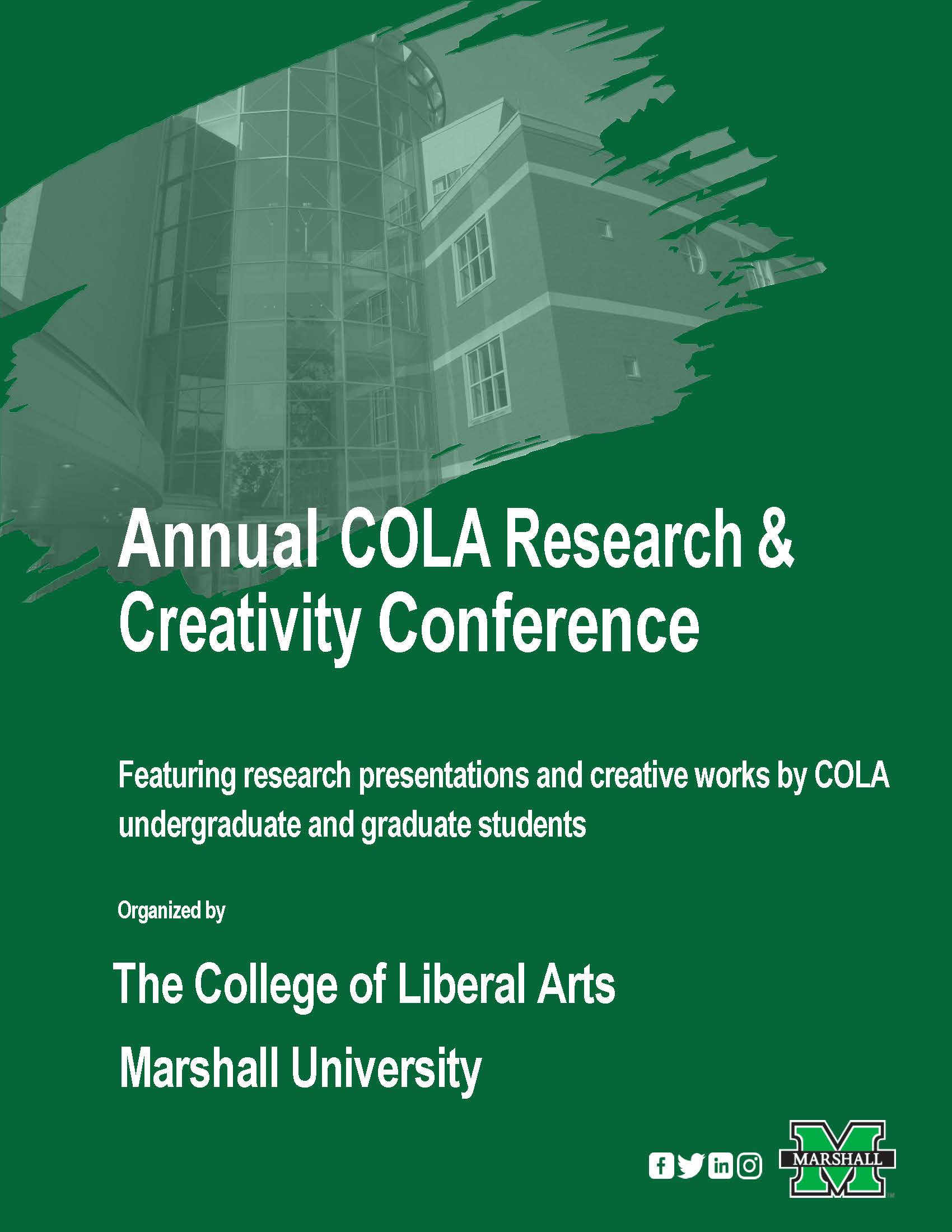Teaching Literary Theory through Annotated Graphic Novels
Document Type
Poster Presentation
Start Date
20-4-2017 10:00 AM
End Date
20-4-2017 11:00 AM
Keywords
graphic novels, literary theory, higher education
Biography
Kathryn Thompson is a senior majoring in History and English with a Creative Writing emphasis. She is a member of the Sigma Tau Delta International English Honors Society. Her poster presentation brings together her professional interest in scholarship and her personal passion for art. Most recently, she has participated in two roundtables applying critical lenses to Disney Princesses. She is excited about her future, which will likely include graduate study in English in either an MFA or Ph.D. program. Her ideal job would be to teach at the university level, and be a novelist and artist on the side.
Major
English (Creative Writing) & History
Advisor for this project
Kateryna Schray
Abstract
Three original works are presented to demonstrate how Graphic Novels can be used to introduce students to critical works as well as literary texts. It has been well established that Graphic Novels are an effective format for introducing students to primary works of literature. However, an ever-increasing emphasis on visual communication and digital storytelling invites literary scholars and academic publishers to consider using this format to teach secondary texts as well. Graphic Novels deliver literature to people who learn better visually rather than verbally, by engaging readers through imagistic renderings of texts. However, they can also teach historical contexts within texts and give solid examples of literary theory within texts. By their nature, Graphic Novels invite the use of short, descriptive boxes that give narrative information of scenes and panels—these can also be used to succinctly offer information about theory, history, and textual analysis within the middle of a text, without interrupting the experience and pleasures of reading. Essentially, just as Graphic Novels help explain confusing scenes through visualization, Annotated Graphic Novels could help convey the same information found in scholarly articles but in a more easily accessible and manageable format. In addition to teaching the texts themselves, Graphic Novels can be used as a valuable teaching tool to introduce theory, history, and analysis to students who may initially struggle with traditional academic discourse. Moreover, academic publishers using the Graphic Novel format could profit from a move in this direction.
Teaching Literary Theory through Annotated Graphic Novels
Three original works are presented to demonstrate how Graphic Novels can be used to introduce students to critical works as well as literary texts. It has been well established that Graphic Novels are an effective format for introducing students to primary works of literature. However, an ever-increasing emphasis on visual communication and digital storytelling invites literary scholars and academic publishers to consider using this format to teach secondary texts as well. Graphic Novels deliver literature to people who learn better visually rather than verbally, by engaging readers through imagistic renderings of texts. However, they can also teach historical contexts within texts and give solid examples of literary theory within texts. By their nature, Graphic Novels invite the use of short, descriptive boxes that give narrative information of scenes and panels—these can also be used to succinctly offer information about theory, history, and textual analysis within the middle of a text, without interrupting the experience and pleasures of reading. Essentially, just as Graphic Novels help explain confusing scenes through visualization, Annotated Graphic Novels could help convey the same information found in scholarly articles but in a more easily accessible and manageable format. In addition to teaching the texts themselves, Graphic Novels can be used as a valuable teaching tool to introduce theory, history, and analysis to students who may initially struggle with traditional academic discourse. Moreover, academic publishers using the Graphic Novel format could profit from a move in this direction.



